The world is a treasure trove of beautiful feats of nature that amaze every adventurer who bears witness. This article will present 4 lovely natural springs in Arkansas, discuss their formation, and reveal where you can visit them.
What Are Natural Springs?
Natural springs are geological wonders that have fascinated and nourished civilizations throughout history. These pristine sources of freshwater emerge from the Earth’s surface, offering a unique glimpse into the intricate hydrological processes that sustain life on our planet. Springs come in various types, each with its own distinct characteristics and environmental significance.
Artesian Springs
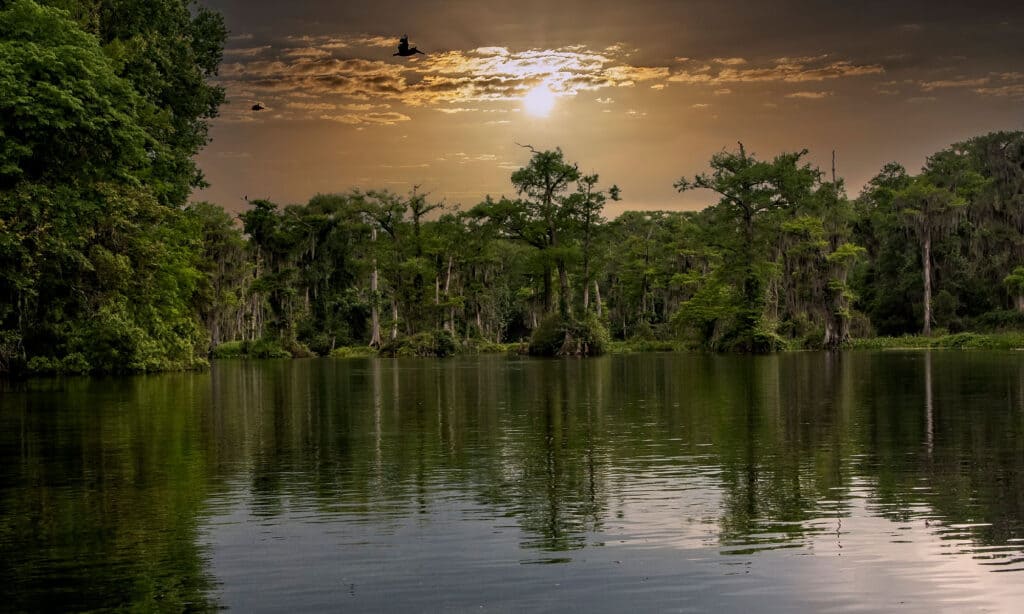
Wakulla Springs in Edward Ball Wakulla Springs State Park, Florida, is the deepest freshwater spring in the world.
©iStock.com/Ruth Peterkin
One of the most common types of natural springs is the artesian spring. Artesian springs occur when underground aquifers are confined within layers of impermeable rock or clay. Pressure builds up within the aquifer due to the weight of overlying materials. This causes water to flow naturally to the surface when a well or borehole is drilled. Artesian springs are known for their continuous flow and often gush forth with remarkable force, creating picturesque fountains. Famous examples include the artesian springs in Florida, such as Silver Springs and Wakulla Springs, renowned for their crystal-clear waters and vibrant aquatic ecosystems.
Thermal Springs

Tourists gather to watch as Old Faithful geyser in Yellowstone National Park erupts, forcing out boiling water and steam from the bedrock below. It is one of over 12,000 hydrothermal features in the park.
©iStock.com/BigshotD3
Another fascinating variety is the thermal spring, also known as hot springs or geothermal springs. These springs owe their warmth to the Earth’s internal heat. It transfers energy to the water as it percolates through underground rock layers. Thermal springs can range in temperature from mildly warm to scalding hot, depending on their depth and the geothermal activity in the region. People have frequented these natural hot tubs for relaxation and therapeutic purposes for centuries. Iconic thermal springs include Iceland’s Blue Lagoon which is famous for its milky blue waters rich in minerals. Also of note are the geothermal hot springs in Yellowstone National Park and their vibrant colors and geothermal features.
Cold Springs
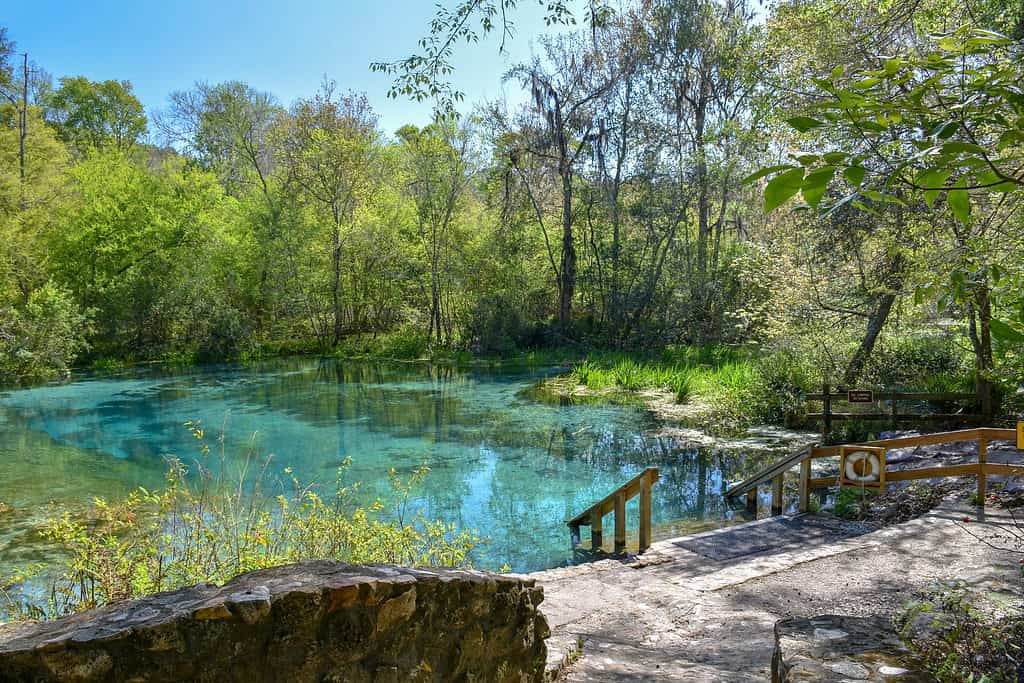
Ichetucknee Springs, a cold spring, is located in Ichetucknee Springs State Park, Florida.
©Joann Dale/Shutterstock.com
Cold springs, on the other hand, maintain a cool and refreshing temperature, often reflecting the ambient climate of their surroundings. These springs typically emerge from underground reservoirs in limestone or other porous rocks. The water remains cool due to the insulating properties of the rock. Cold springs provide critical sources of freshwater in arid regions and support diverse ecosystems. One notable example is Florida’s Ichetucknee Springs, where crystal-clear waters flow at a constant 72 degrees Fahrenheit, making it a haven for snorkelers and wildlife enthusiasts alike.
Carbonated Springs
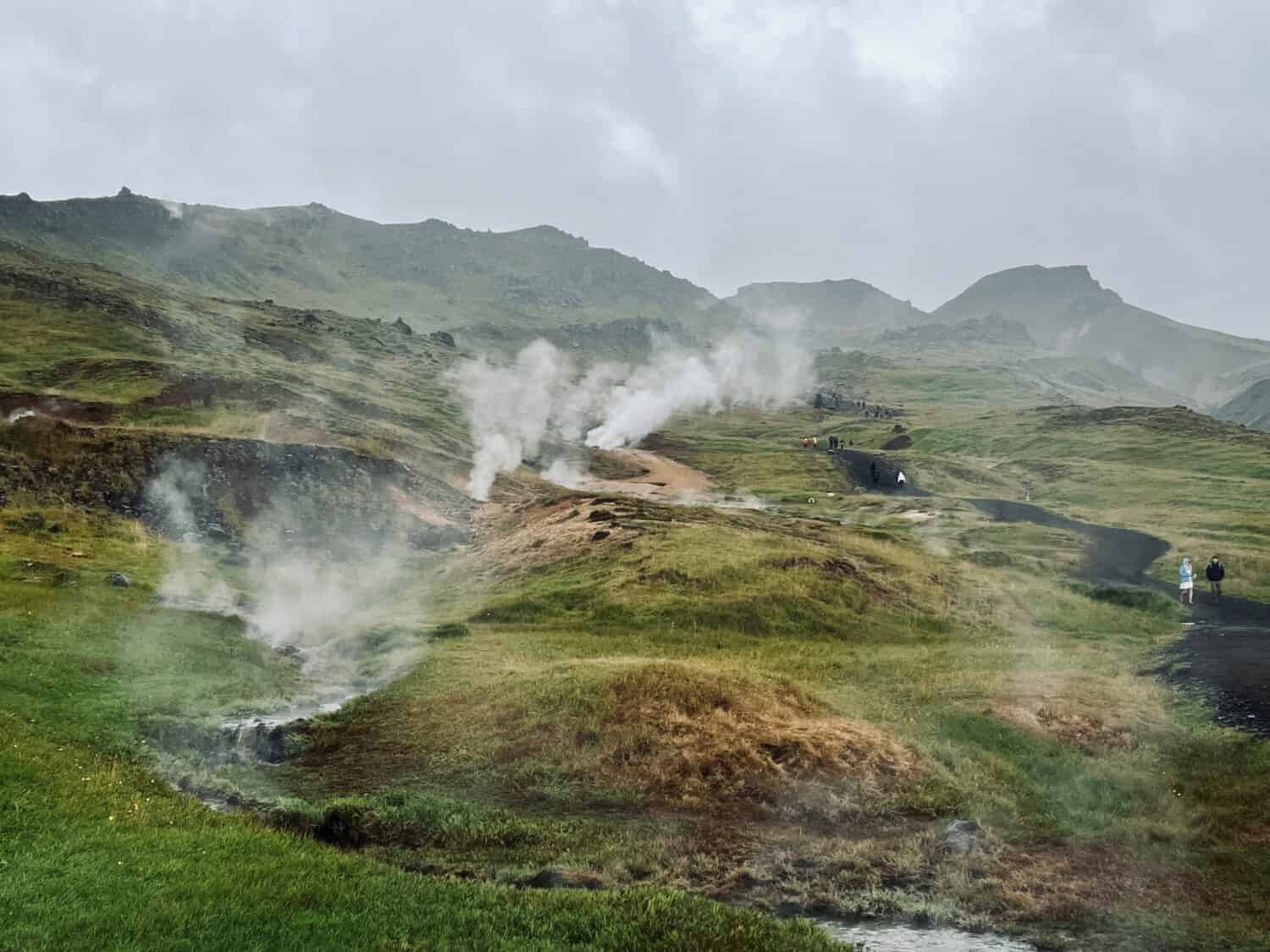
The mossy, wetland terrain of Reykjadalur Valley, Iceland is known for its mudpots, soda springs, and geothermal activity.
©Catrina Genovese/Shutterstock.com
Lastly, there are carbonated or soda springs. Soda springs contain naturally carbonated water due to the presence of dissolved minerals like calcium carbonate. When the water reaches the surface, the release of pressure causes the carbon dioxide to escape, creating effervescent bubbles. People have enjoyed the unique taste and purported health benefits of carbonated springs for centuries, often using them for bottling sparkling mineral water. Saratoga Springs in New York is famous for its carbonated springs, which have been popular since the 19th century and are a cornerstone of the town’s history and culture. If you travel internationally, you can also visit soda springs in Reykjadalur Valley, Iceland.
#1 Blue Spring
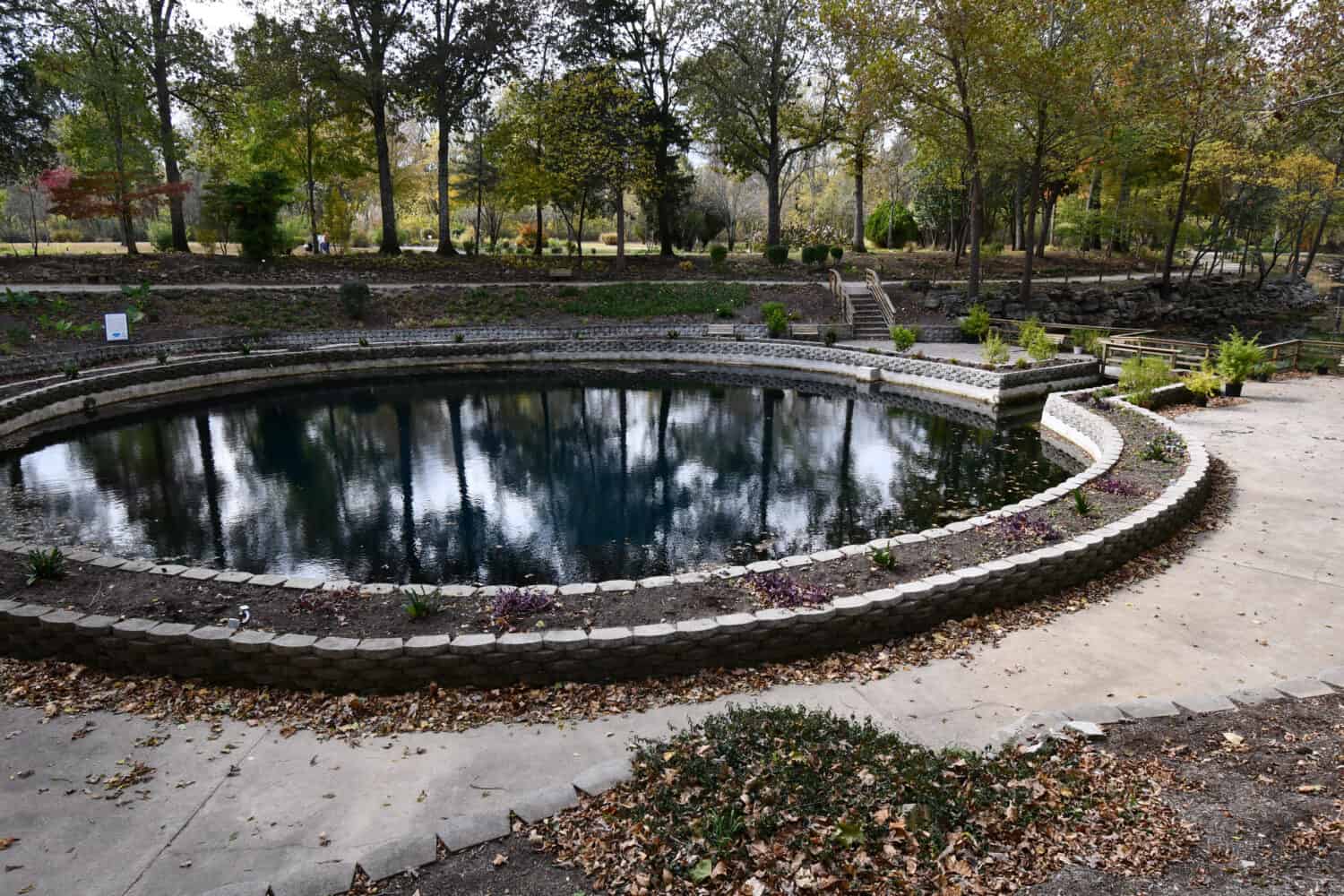
You can visit Blue Spring Heritage Site and enjoy its serene beauty.
©Silvlandia/Shutterstock.com
Blue Spring is a captivating natural spring located in Arkansas. This spring has remarkable clarity and stunning blue color, which is a result of the spring’s unique hydrology and the minerals found in the water. It is situated within the Blue Spring Heritage Center, a designated natural attraction in Eureka Springs, Arkansas.
Blue Spring is classified as a cold spring, characterized by its cool and refreshing waters. The spring’s water emerges from the depths of the Ozark Mountains from a cave that feeds into the spring pool. As the water flows up from the underground aquifer through the limestone rock, it remains consistently cool. This makes it a refreshing oasis, especially during the hot summer months. The clear blue color of the water is a result of the dissolved minerals and the way the water interacts with the light.
Visiting
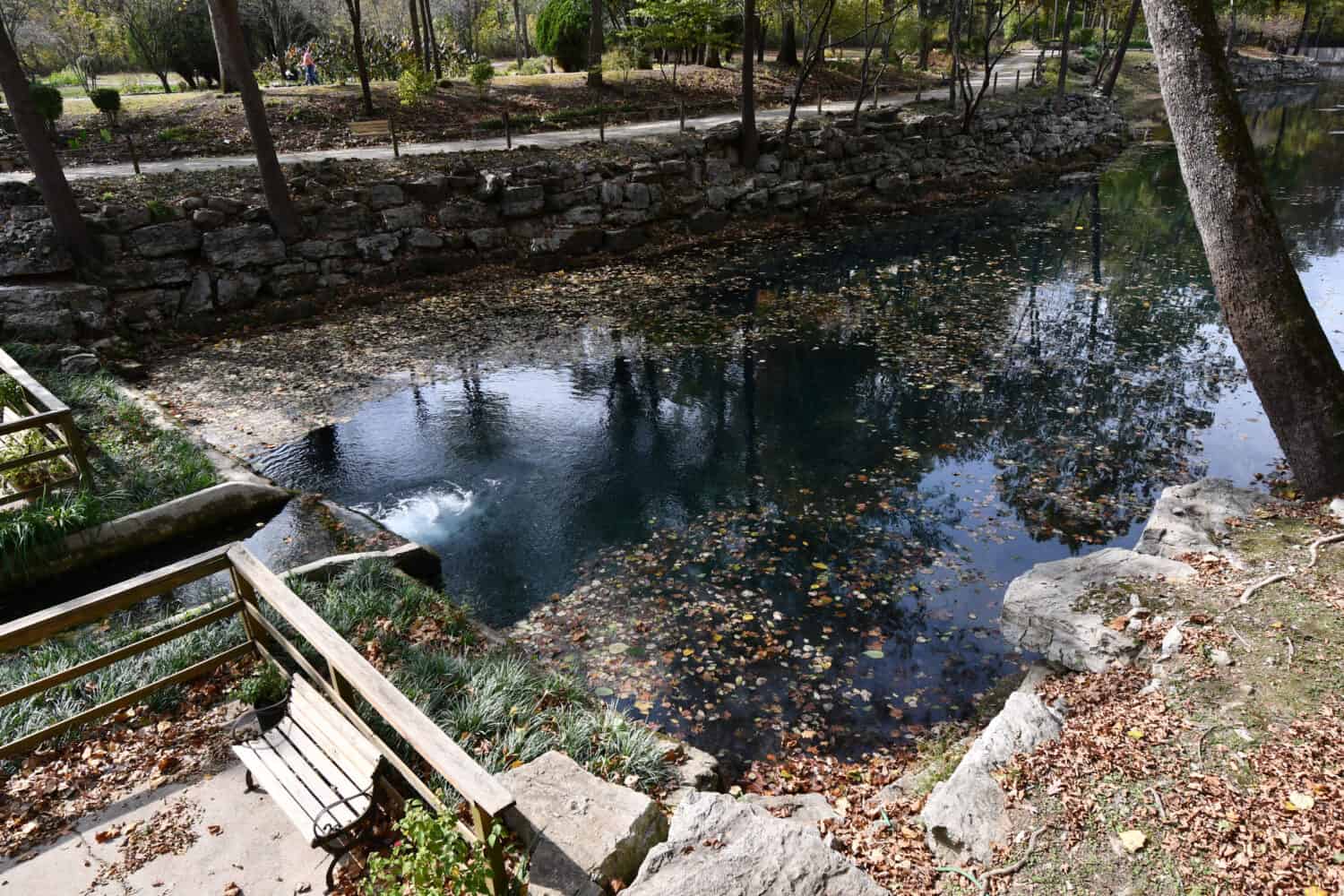
Blue Spring Heritage Site is a lovely place to visit for a walk or a picnic.
©Silvlandia/Shutterstock.com
At the Blue Spring Heritage Center in Eureka Springs, visitors can embark on a journey through natural and historical wonders. Here, you can marvel at the mesmerizing Blue Spring, and learn about its geological and ecological significance through informative exhibits and interpretive signage. As you wander the serene, forested trails, you’ll have the opportunity to immerse yourself in the tranquil beauty of the Ozark Mountains. The historic Jackson House, dating back to the 1800s, offers a glimpse into the area’s past and the role it played as a stopover on the Old Wire Road. The center often hosts educational programs and guided tours to deepen your understanding of the region’s heritage and ecology. Whether the natural wonders or the history of the Ozarks sparks your interest, the Blue Spring Heritage Center provides an enriching and serene experience for all who visit.
#2 Blanchard Springs
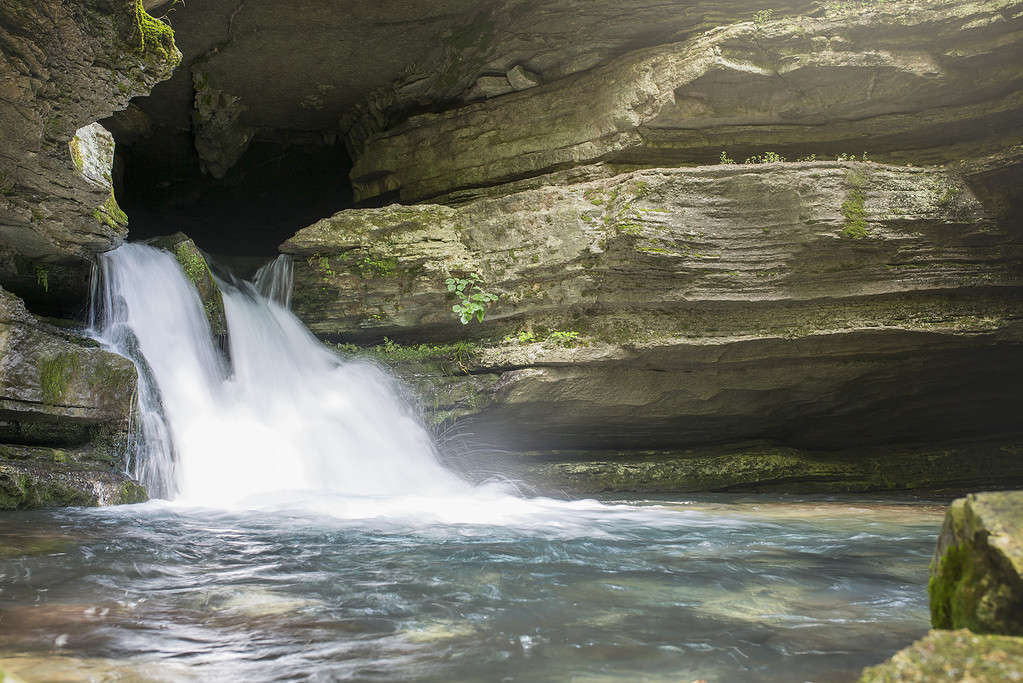
The Blanchard Springs Caverns are a testament to the beauty and intricacy of hydrological processes in the area.
©Jenniveve84/iStock / Getty Images Plus via Getty Images
Blanchard Springs, a captivating natural spring, sits in the heart of the Ozark National Forest in Arkansas. Tucked away within the serene confines of the Blanchard Springs Recreation Area, this remarkable spring beckons visitors to explore its pristine natural beauty and delve into its fascinating geological features.
The beautiful natural spring belongs to the category of cold springs. It emerges from an intricate system of caverns concealed within the limestone rock formations of the Ozark Mountains. As the water meanders through these subterranean passages, it retains its invigorating chill, making it an inviting destination during the warmer months. The limestone substratum imparts a remarkable clarity to the water, resulting in pools of crystal-clear and translucent beauty.
Visiting
The centerpiece of this area is the Blanchard Springs Caverns, an extensive underground network of caves and chambers. Guided tours are available, allowing you to delve into this mesmerizing subterranean world, adorned with awe-inspiring formations such as stalactites, stalagmites, flowstones, and enchanting cave pools. These tours cater to diverse levels of caving experience, ranging from easy, informative walks to more adventurous explorations.
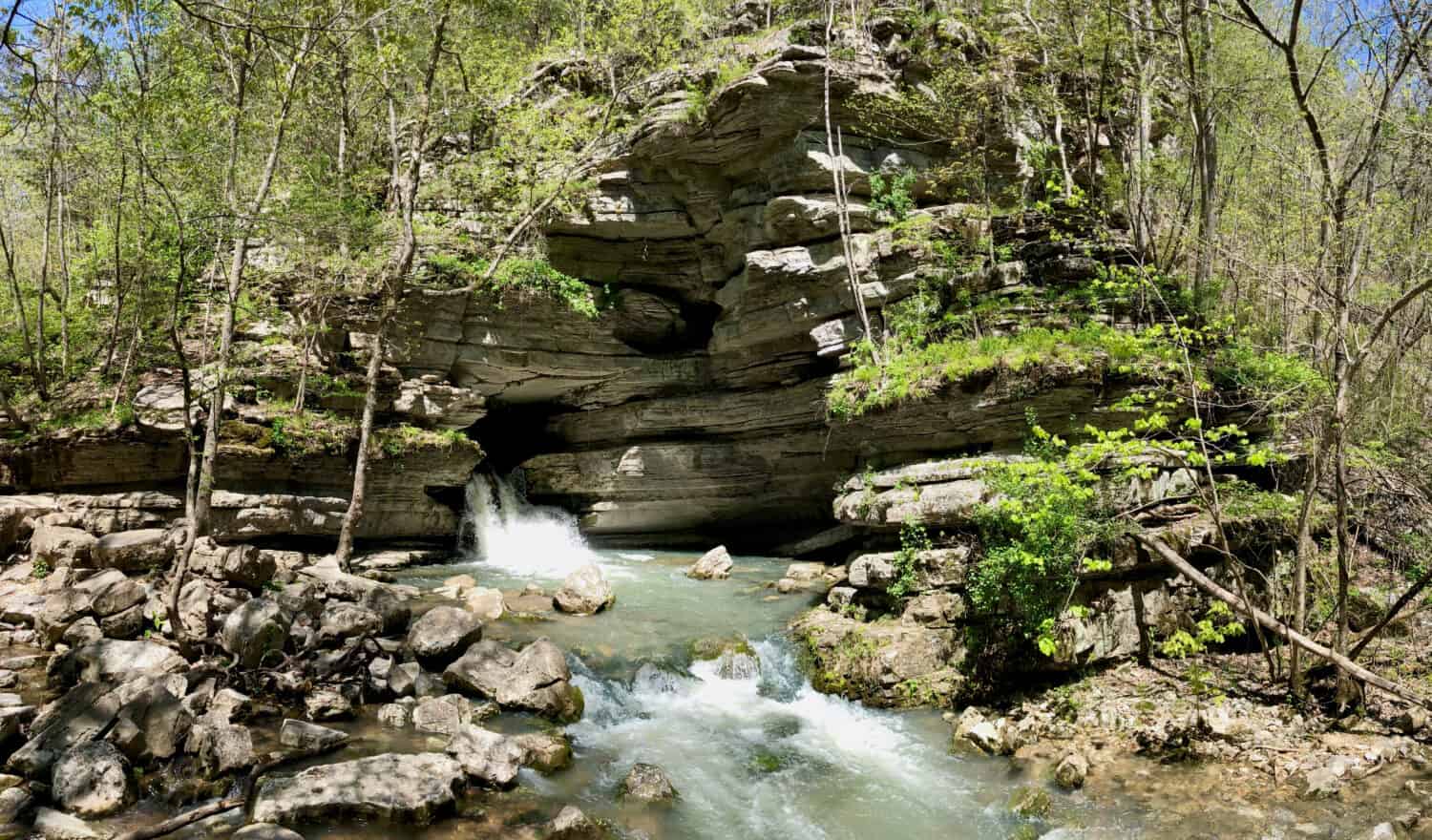
With numerous entrances and water features, the Blanchard Springs Caverns are a magical place to explore.
©Joop Studio/Shutterstock.com
Moreover, you can witness the spring’s emergence from the mountainside by visiting the Blanchard Springs overlook. Here you can experience a picturesque panorama of the spring and its surrounding landscape. The Blanchard Springs Recreation Area also provides a network of hiking trails that wind through the lush forests of the Ozark National Forest. These trails accommodate various skill levels, inviting visitors to embark on leisurely strolls or more challenging hikes. Along these paths, you can observe the diverse flora and fauna that thrive in this enchanting natural setting.
For those seeking a tranquil respite in nature, the recreation area features designated picnic areas you can enjoy amidst the calming backdrop of Blanchard Springs and the soothing sounds of flowing water. To enhance your understanding of the region’s geological wonders, history, and ecological significance, the Blanchard Springs Recreation Area includes a visitor center. Here, you can access valuable information, maps, and educational exhibits that serve as an excellent starting point for your exploration.
#3 Mammoth Spring
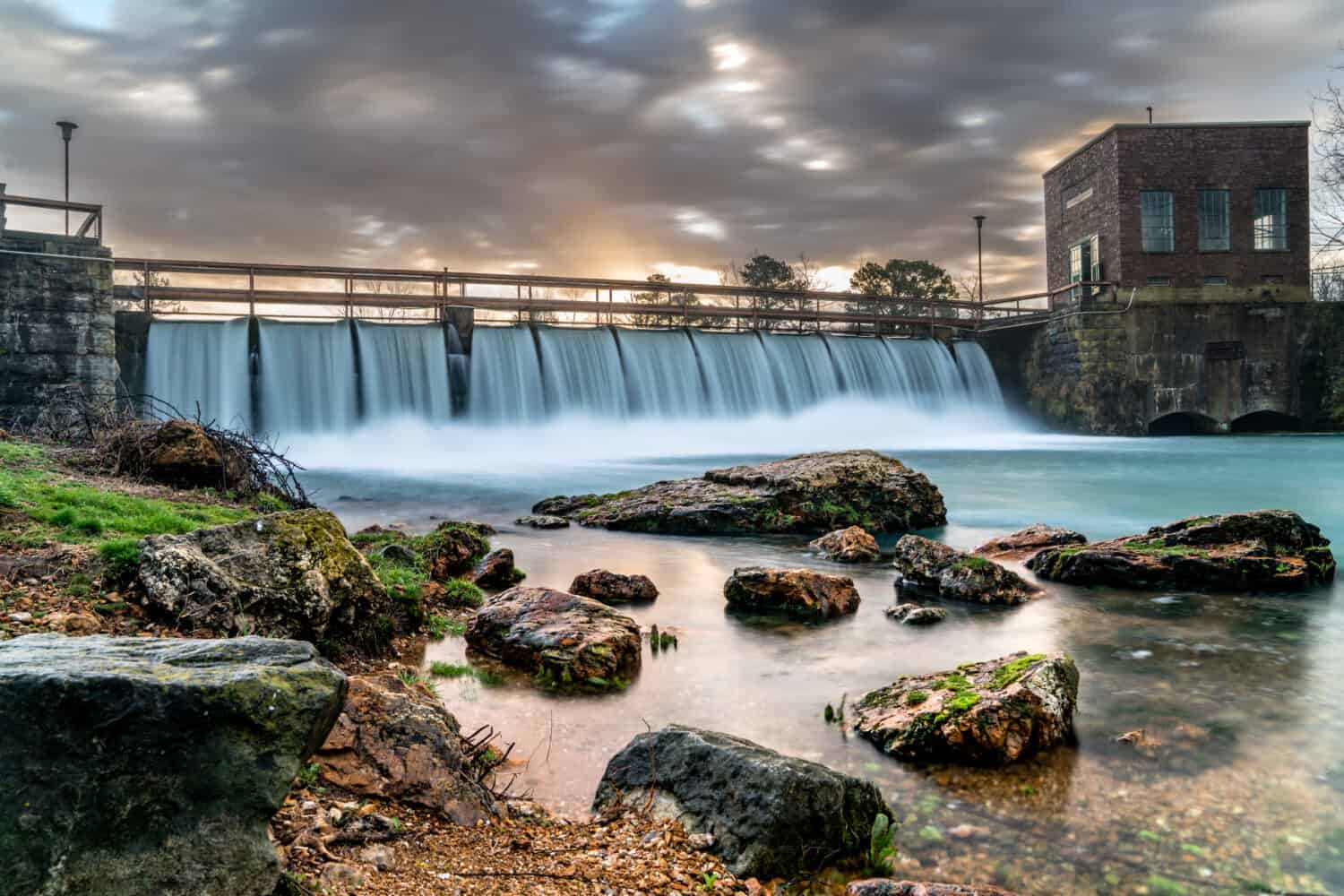
Mammoth Spring is in Mammoth Spring National Park, Arkansas.
©James Haney/Shutterstock.com
Mammoth Spring, located in the charming town of Mammoth Spring, Arkansas, stands as the largest natural spring in the state, earning its name due to its sheer size. With an astonishing water flow rate that can exceed 9 million gallons per hour, Mammoth Spring is not only the largest in the state but also one of the largest springs in the entire United States. This captivating natural spring is an artesian spring. It’s a prime example of a karst spring, which means its waters flow to the surface under natural pressure through underground limestone or karst geology. The spring’s emergence creates a captivating and crystal-clear pool that serves as the headwaters of the Spring River.
Visiting
Visitors to Mammoth Spring State Park can witness this stunning phenomenon while enjoying various recreational activities like canoeing, fishing, and exploring the lush surroundings, making Mammoth Spring a must-visit destination for nature enthusiasts and anyone seeking to appreciate Arkansas’s natural beauty. Additionally, this magnificent spring plays a crucial role in providing freshwater to the region, further emphasizing its ecological significance.
#4 Hot Springs National Park
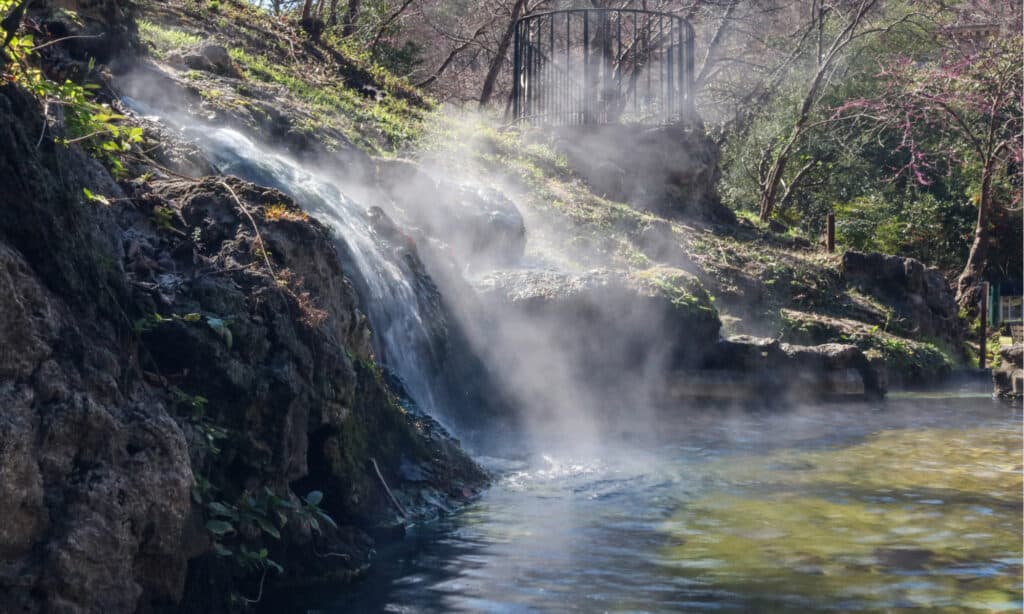
A notable landmark in Hot Springs National Park, Arkansas, is the Hot Water Casacade.
©Bram Reusen/Shutterstock.com
The system of hot springs at Hot Springs National Park in Arkansas is a remarkable natural phenomenon. The vast network consists of 47 hot springs that are a product of unique geological processes that begin deep within the Earth’s crust. Rainwater and snowmelt seep into the ground, where they descend to considerable depths. As these waters descend, they are heated by the Earth’s internal heat sources, such as molten rock and geothermal activity. The rising temperatures cause the water to become superheated, sometimes reaching temperatures as high as 143 degrees Fahrenheit (62 degrees Celsius).
The hot water is then forced back to the surface through a series of geological fault lines and rock fractures. As it emerges, it forms a network of thermal springs, creating the natural phenomenon that is the centerpiece of Hot Springs National Park. These thermal springs are mineral-rich and have drawn people to their soothing waters for centuries, believed to offer various health benefits.
Visiting

Quapaw Bathhouse is one location where you can immerse yourself in the relaxing and curative waters of the hot springs.
©Jack Chmela/Shutterstock.com
Visitors to Hot Springs National Park can experience the springs in several ways. One of the most iconic spots is Bathhouse Row. This historic district within the park features a row of well-preserved bathhouses. These bathhouses date back to the early 20th century when bathing in the thermal waters was a popular activity. While many of them have been repurposed for different uses, some, like the Buckstaff Bathhouse, continue to offer traditional thermal baths. Visitors can immerse themselves in the therapeutic waters and enjoy the full experience of the springs. Visitors can also enjoy the thermal waters at Quapaw Baths and Spa, a modern spa facility located nearby.
Another way to view the springs is by visiting the Hot Springs Mountain Tower. The tower offers panoramic views of the surrounding area, including the hot springs. From this vantage point, you can witness the hot water flowing from the springs and appreciate the natural beauty of the park’s landscape.
The photo featured at the top of this post is © iStock.com/zrfphoto
Thank you for reading! Have some feedback for us? Contact the AZ Animals editorial team.






